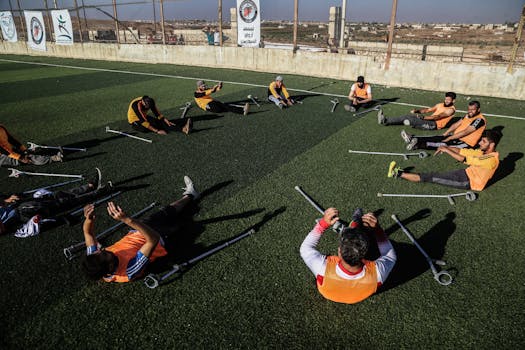
Unleashing Team Spirit: The Ultimate Fitness Challenge for Group Goals
Takeaways
- Setting group fitness goals enhances motivation and accountability.
- Team challenges foster camaraderie and improve workplace relationships.
- Incorporating fun and variety keeps participants engaged and committed.

The Power of Group Goals

- Increased Motivation: When teammates cheer each other on, individuals are more likely to push themselves beyond their limits. The encouragement from peers can be a powerful motivator, especially on days when personal motivation wanes.
- Accountability: Having a team means having a support system. Members hold each other accountable for their commitments and goals, making it less likely for anyone to fall off track.
- Enhanced Social Connections: Fitness challenges provide an opportunity for team members to bond over shared experiences. These connections can translate to improved workplace relationships and collaboration.
- Variety and Fun: Engaging in a fitness challenge with a group allows for a diverse range of activities. From group runs to team sports, the variety keeps participants excited and engaged.
Designing Your Team Fitness Challenge

1. Set Clear Objectives
Before launching the challenge, define what you aim to achieve. Is the goal to improve overall fitness, promote weight loss, or simply encourage more physical activity? Having clear objectives will help guide the challenge’s design and keep everyone focused.
2. Choose Inclusive Activities
Consider the varying fitness levels and preferences of your team members. Incorporate a mix of activities that appeal to everyone, such as walking, running, cycling, or group classes. This inclusivity ensures that everyone can participate and enjoy the challenge.
3. Establish a Timeline
Set a specific timeframe for the challenge. Whether it’s a month-long initiative or a seasonal event, having a clear timeline creates urgency and helps maintain momentum.
4. Track Progress
Implement a system for tracking individual and team progress. This could be through apps, spreadsheets, or a communal board where everyone can see the collective achievements. Tracking progress fosters a sense of accomplishment and can motivate participants to stay engaged.
5. Celebrate Milestones
Recognize and celebrate individual and team achievements throughout the challenge. Whether it’s through shout-outs during meetings, rewards, or a celebratory event, acknowledging progress can boost morale and reinforce commitment.
Conclusion
A Team Fitness Challenge is more than just a way to get fit; it’s an opportunity to build relationships, foster teamwork, and create a culture of health and wellness. By setting group goals, encouraging participation, and celebrating successes, organizations can enhance not only the physical well-being of their members but also their overall morale and camaraderie. So gather your team, set your goals, and embark on a transformative fitness journey together!







